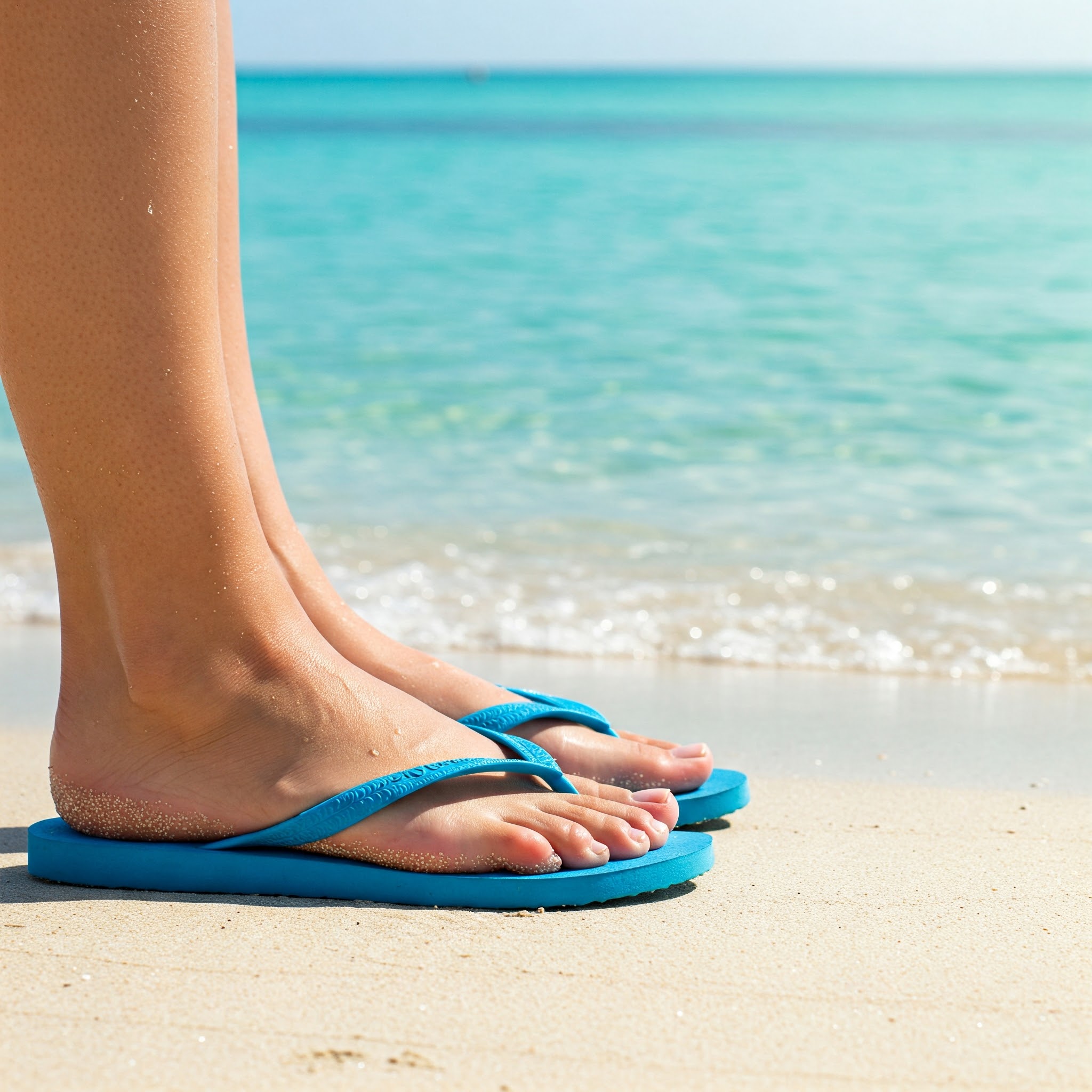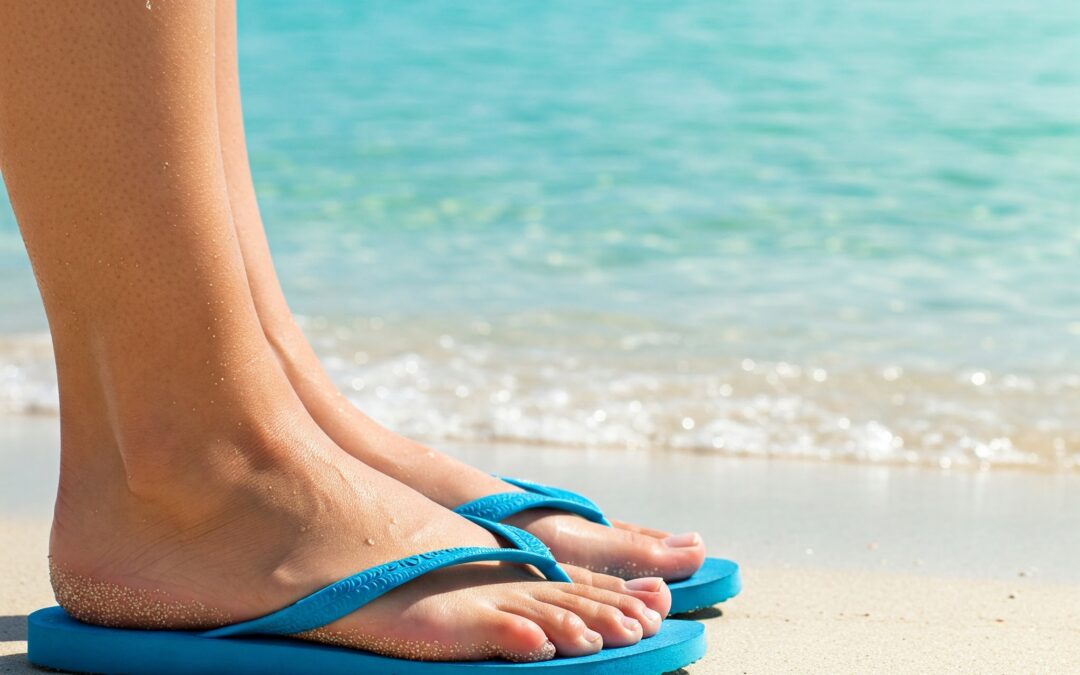Don’t Let Your Feet Get Fried: Skin Cancer Awareness for Sarasota Sandal Lovers
The sun is shining, the Gulf breeze is calling, and from Bradenton, to Sarasota and down to Venice, FL, that often means slipping into our favorite sandals or flip-flops. Our feet get to breathe, feel the warmth of the pavement, and embrace the laid-back lifestyle. But as we celebrate Skin Cancer Awareness Month this May, it is crucial to remember that this freedom for our feet comes with a potential risk: skin cancer.
At West Coast Podiatry, we see firsthand the importance of foot health. While many think of sun protection for their face, arms, and legs, the skin on our feet is often overlooked. Yet, it’s just as susceptible to the harmful effects of ultraviolet (UV) radiation. In a place like Sarasota, where exposed feet are the norm for a significant portion of the year, understanding this risk is paramount.
Why Your Feet Are Vulnerable
Think about it: how often do you diligently apply sunscreen to the tops, soles, and between the toes of your feet? For most of us, the answer is probably “not often enough” or even “rarely.” This lack of protection, combined with the frequent exposure our feet experience in sandals, creates a perfect storm for sun damage.
The skin on our feet, while perhaps feeling tougher on the soles, is still composed of the same cells that can become cancerous. Melanoma, the deadliest form of skin cancer, can develop anywhere on the body, including the feet. Other types of skin cancer, such as basal cell carcinoma and squamous cell carcinoma, can also appear on the feet, often presenting as unusual growths, sores that don’t heal, or changes in moles.
The Sneaky Spots: Where to Watch Out
Because we don’t always see our feet as closely as other parts of our body, skin cancer on the feet can sometimes go unnoticed until it’s more advanced. Here are some key areas to pay close attention to:
- The Tops of Your Feet and Toes: These areas receive direct sunlight when wearing sandals or walking barefoot.
- Between the Toes: This area can be surprisingly vulnerable, especially if you don’t think to apply sunscreen there.
- The Soles of Your Feet: While less exposed to direct sunlight, the soles can still develop skin cancer, particularly in non-sun-related forms.
- Under the Toenails: Melanoma can even occur in the nail matrix, appearing as a dark streak or discoloration that isn’t due to injury.
Sandals and Flip-Flops: A Double-Edged Sword
We love our sandals and flip-flops here in Sarasota. They’re comfortable, practical for the climate, and fit our casual lifestyle. However, their very design leaves large portions of our feet exposed to the sun’s harmful rays. While they allow our feet to breathe, they offer virtually no protection against UV radiation.
This doesn’t mean you have to ditch your favorite footwear. It simply means you need to be more mindful of sun protection for your feet when you choose to wear them.
Protecting Your Feet: Simple Steps for Sun Safety
Fortunately, safeguarding your feet from sun damage is relatively easy. Incorporate these habits into your routine, especially during the sunny Sarasota months:
- Sunscreen is Your Foot’s Best Friend: Apply a broad-spectrum sunscreen with an SPF of 30 or higher to all exposed areas of your feet, including the tops, soles, and between your toes. Do this at least 15-30 minutes before heading outdoors and reapply every two hours, or more often if you’ve been swimming or sweating. Don’t forget the backs of your heels and ankles!
- Consider Protective Footwear: While sandals are a staple, opt for closed-toe shoes or even lightweight sneakers when you know you’ll be spending extended periods in direct sunlight. These offer more comprehensive coverage.
- Seek Shade: When possible, give your feet (and the rest of your body) a break from direct sunlight by seeking shade, especially during the peak UV radiation hours of 10 a.m. to 4 p.m.
- Regular Self-Exams: Get to know your feet. Regularly inspect them for any new moles, changes in existing moles, unusual growths, sores that aren’t healing, or changes in nail color or texture. Pay close attention to all areas, including the soles and between your toes.
- Don’t Forget Your Toenails: Keep an eye out for any dark streaks or discoloration under your toenails that aren’t related to an injury. This could be a sign of subungual melanoma.
- Professional Foot Exams: As part of your overall health routine, consider including regular foot exams by your podiatrist at West Coast Podiatry. We are trained to identify potential skin abnormalities on the feet that you might miss during a self-exam. If we notice anything suspicious, we can recommend further evaluation by a dermatologist.
Early Detection Saves Lives
Like all forms of cancer, early detection of skin cancer on the feet significantly improves treatment outcomes. By being vigilant about sun protection and regularly examining your feet, you can take proactive steps to protect your health.
This Skin Cancer Awareness Month, let’s extend our sun safety practices to include our often-neglected feet. Enjoy the beautiful Sarasota sunshine and the freedom of your sandals, but do so responsibly. If you have any concerns about the skin on your feet, don’t hesitate to schedule an appointment with us at West Coast Podiatry. Your foot health is our priority, and that includes protecting you from the sun’s harmful effects. Let’s keep those feet happy and healthy for all the sunny days ahead!



